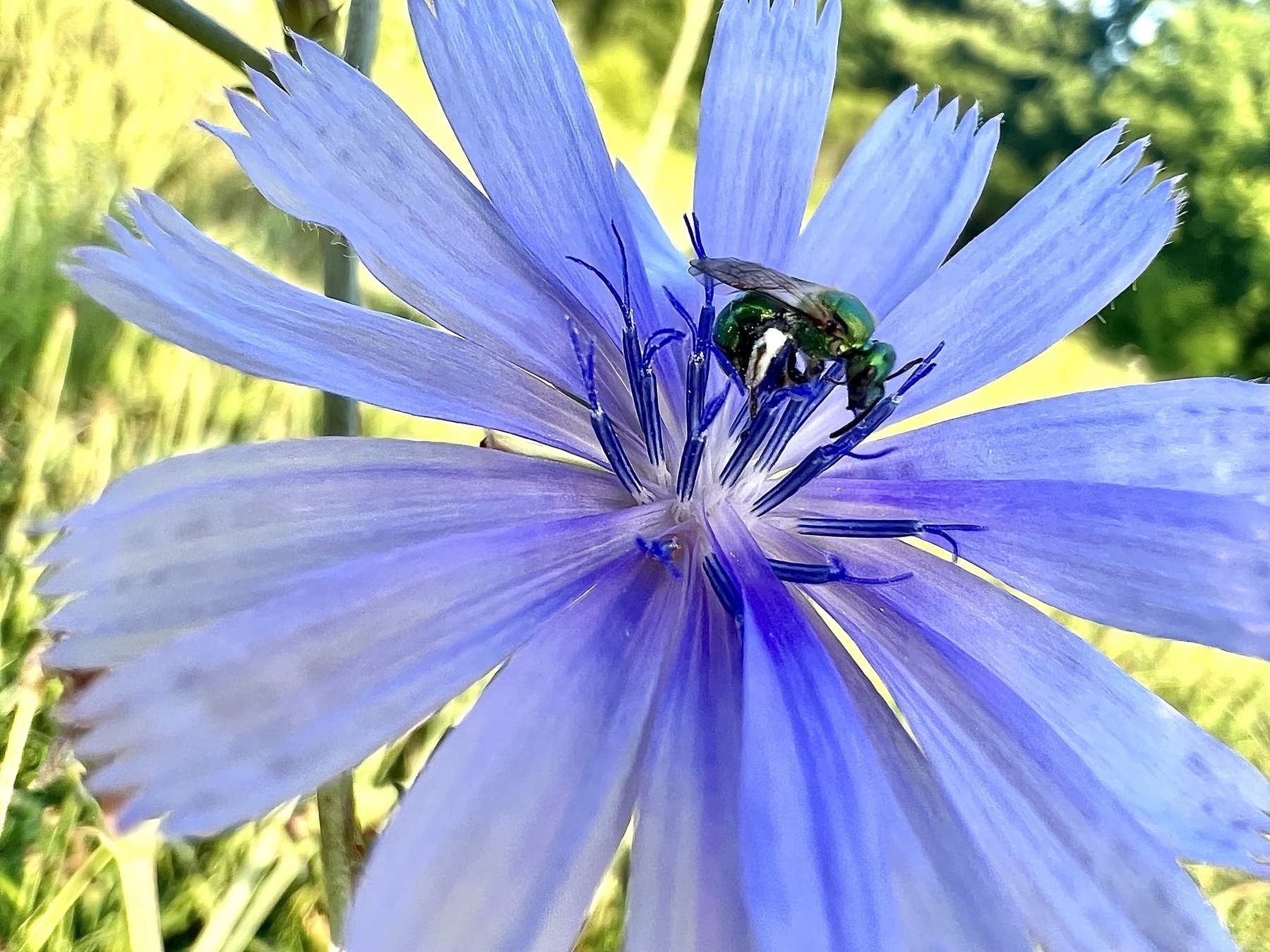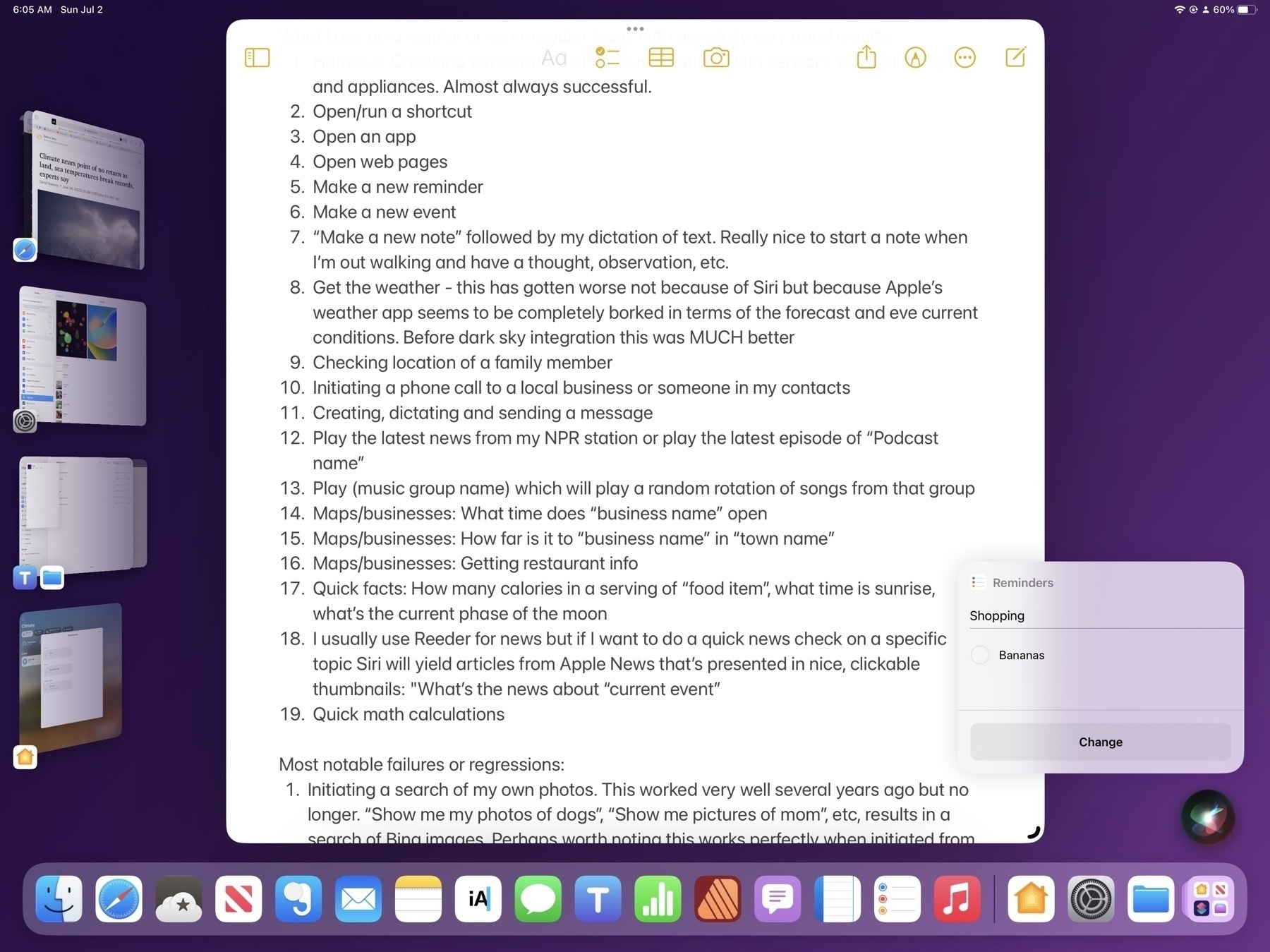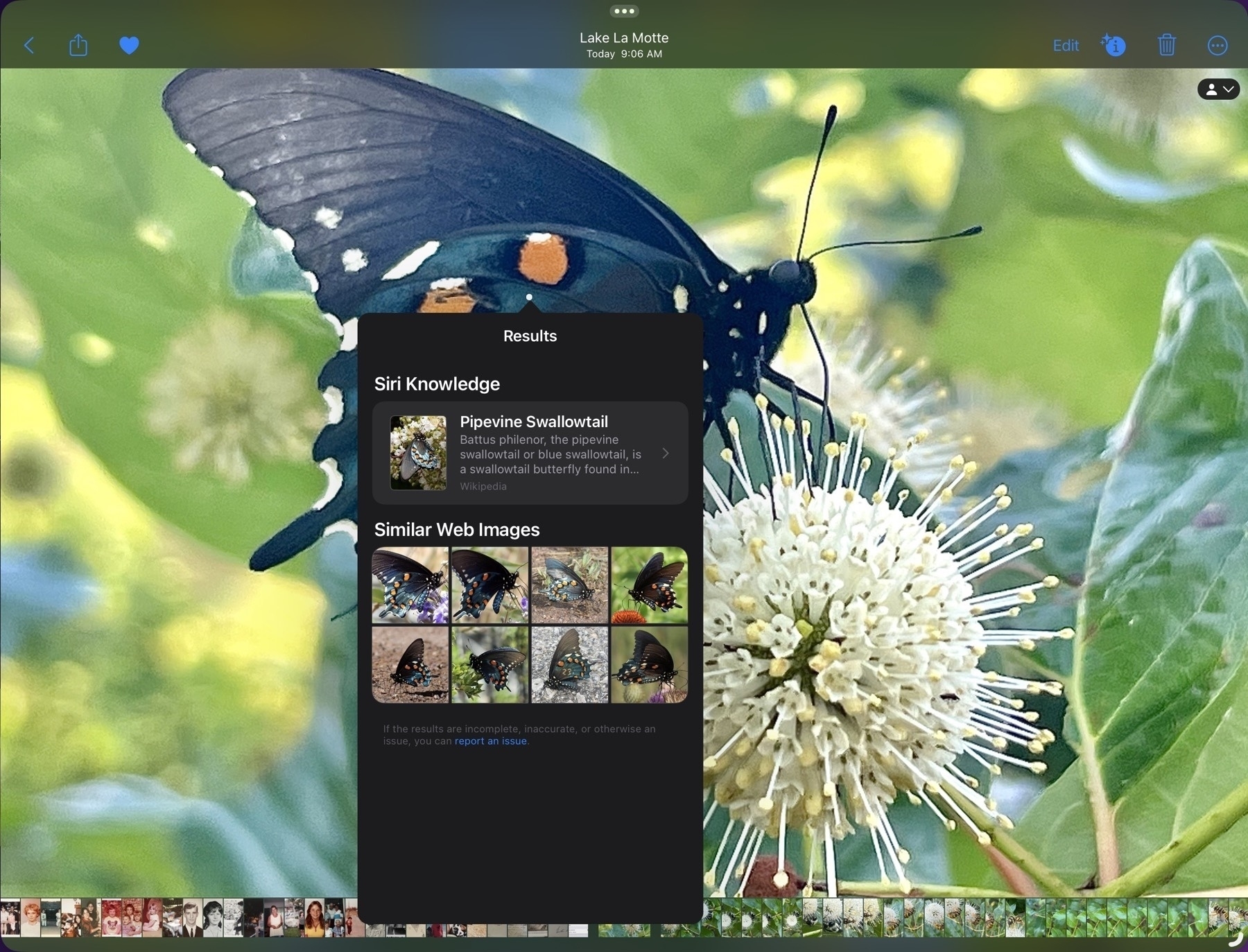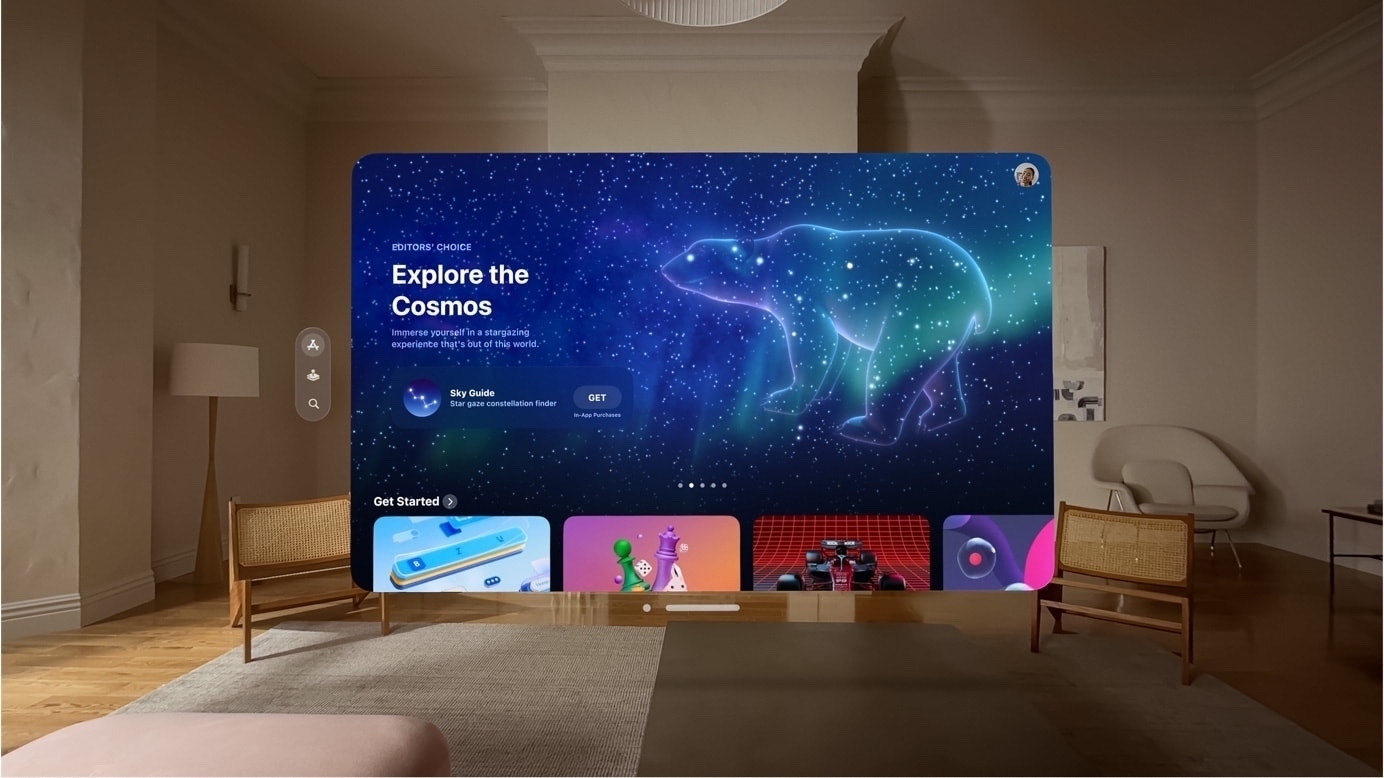A growing number of people believe that humanity is doomed because of climate change, while some are even full-blown preparing for a world post-collapse. Like Ben Green, who calls himself a “happy doomer”. Join me as I visit the old army barracks he calls home, to figure out if he’s right to be preparing for such an eventuality.
A brief but good start to a much larger conversation that should be front and center everyday. Ignoring the crisis or pretending it will be magically solved is not an answer.
A nice morning dog walk with all of the usual characters. I'm getting better at identifying bird song. Today: White-eyed vireo, yellow breasted chat, northern parula and cardinals.
Also, flowers:
Queen Anne's Lace

Chicory and a green bee, perhaps Agapostemon virescens.
A check-in with Siri and Apple's Machine Learning
First, to begin with a recent bit of related news from Humane, a company founded by ex-Apple employees that has finally announced it's first product. I bring this up at the beginning of a post about Siri because the purported aim of the product, the Ai Pin, is ambient computing powered by AI. It is a screen-less device informed by sensors/cameras that the user interacts with primarily via voice or a touch-based projection. Humane is positioning the device as a solution for a world that spends too much time looking at screens. The Ai Pin is intended to free us from the screen. It's an interesting idea but, no.
My primary computer is an iPad and then an iPhone. These are supplemented with AirPods Pro, the Apple Watch and HomePods. Of course all of these devices have access to Apple's assistant Siri. It's common among the tech and Apple press to ridicule Siri as stagnant technology left to wither on the vine. A voice assistant that's more likely to frustrate users than enable them in useful ways. The general joke/meme is that Siri's only good for a couple of things and that it often gets even those few things wrong.
But that's not been my experience. In general my experience using Siri has been positive and I've long found it useful in my daily life. I do think there's some truth to the notion that Apple's been fairly conservative in its pushing forward of Siri. As is generally the case Apple goes slowly with careful consideration. I'm not suggesting Siri is perfect or finished. Of course not and yes, there's more to be done.
All that said, I consider it a big win that I have an always available, easy to access voice assistant, that compliments my visual and touch-based computing. I use Siri several times a day with very good results and I’d say that my satisfaction with Siri the voice assistant is pretty high just in terms of the successful responses I have. My primary methods of interaction are via the iPad or iPhone, sometimes with AirPods Pro, using a mix of Hey Siri and keyboard activation.
Here I'm offering just the most basic, 2 point evaluation:
- Successful responses based on current feature set: 9/10
- Innovation and addition of new features: 3/10
What I use on a regular or semi-regular basis with generally very good results:
- HomeKit: Checking temperature of various locations with sensors, controlling lights and appliances. Almost always successful.
- Open/run a shortcut
- Open an app
- Open web pages
- Make a new reminder
- Make a new event
- “Make a new note” followed by my dictation of text. Really nice to start a note when I’m out walking and have a thought, observation, etc.
- Get the weather - this has gotten worse not because of Siri but because Apple’s weather app seems to be completely borked in terms of the forecast and eve current conditions. Before dark sky integration this was MUCH better
- Checking location of a family member
- Initiating a phone call to a local business or someone in my contacts
- Creating, dictating and sending a message
- Play the latest news from my NPR station or play the latest episode of “Podcast name”
- Play (music group name) which will play a random rotation of songs from that group
- Maps/businesses: What time does “business name” open
- Maps/businesses: How far is it to “business name” in “town name”
- Maps/businesses: Getting restaurant info
- Quick facts: How many calories in a serving of “food item”, what time is sunrise, what’s the current phase of the moon
- I usually use Reeder for news but if I want to do a quick news check on a specific topic Siri will yield articles from Apple News that’s presented in nice, clickable thumbnails: "What’s the news about “current event”
- Quick math calculations
Most notable failures or regressions that I've found in my use:
- Initiating a search of my own photos. This worked very well several years ago but no longer. “Show me my photos of dogs”, “Show me pictures of mom”, etc, results in a search of Bing images. Perhaps worth noting this works perfectly when initiated from a spotlight search, but fails when initiated from Siri.
- Multiple follow-ups, conversational interactions (not really a feature in the first place). This is a specific feature noted for the upcoming release of iOS 17.
- Asking Siri for recent emails or messages for a contact yields inconsistent results and a cumbersome, difficult interface. If I ask Siri to show me recent emails from a contact it usually only shows one email but sometimes will show more and will read the first email subject line asking if I want more read. If I say no the list disappears. There's no way to interact with the found emails.
In the tech sphere where the news dominated by "AI" for the past 10 months, most recently ChatAI, large language model integration into web search, Microsoft's Copilot and Google's Bard being the most prominent examples, pundits were wondering, what would Apple do to respond? When would they put more effort into Siri and would it include AI of some sort. Or would the voice assistant be left to fall further behind? The not too surprising answer seems to be that Apple will continue to improve Siri gradually on its own terms without being pressured by the efforts and products of others or the calls from tech pundits.
We view AI as huge, and we will continue weaving it into our products on a very thoughtful basis. - Tim Cook.
Siri the voice assistant is just one part of the larger machine learning that powers features like dictation, text recognition, object ID and subject isolation in image files, auto correct, Spotlight and much more. While Siri is a focus point of interaction, the underlying foundation of machine learning is not meant to be a focus, it's not the tool but rather the background context that informs and assists the user as features found in the OS and apps. Machine learning isn't as flashy as ChatGBT and Bard but unlike those services it absolutely and reliably improves my user experience in meaningful ways every day.
For those that haven't used Siri recently Apple provides a few pages with examples of the current feature list: Apple's Siri for iPad help page and Apple's Main Siri page
Button bush, Cephalanthus occidentalis is always popular with the butterflies and bees. They have a very nice spicy fragrance too.
Pipevine Swallowtail

Milesia virginiensis, known generally as the yellowjacket hover fly. They look intimidating but are friendly.
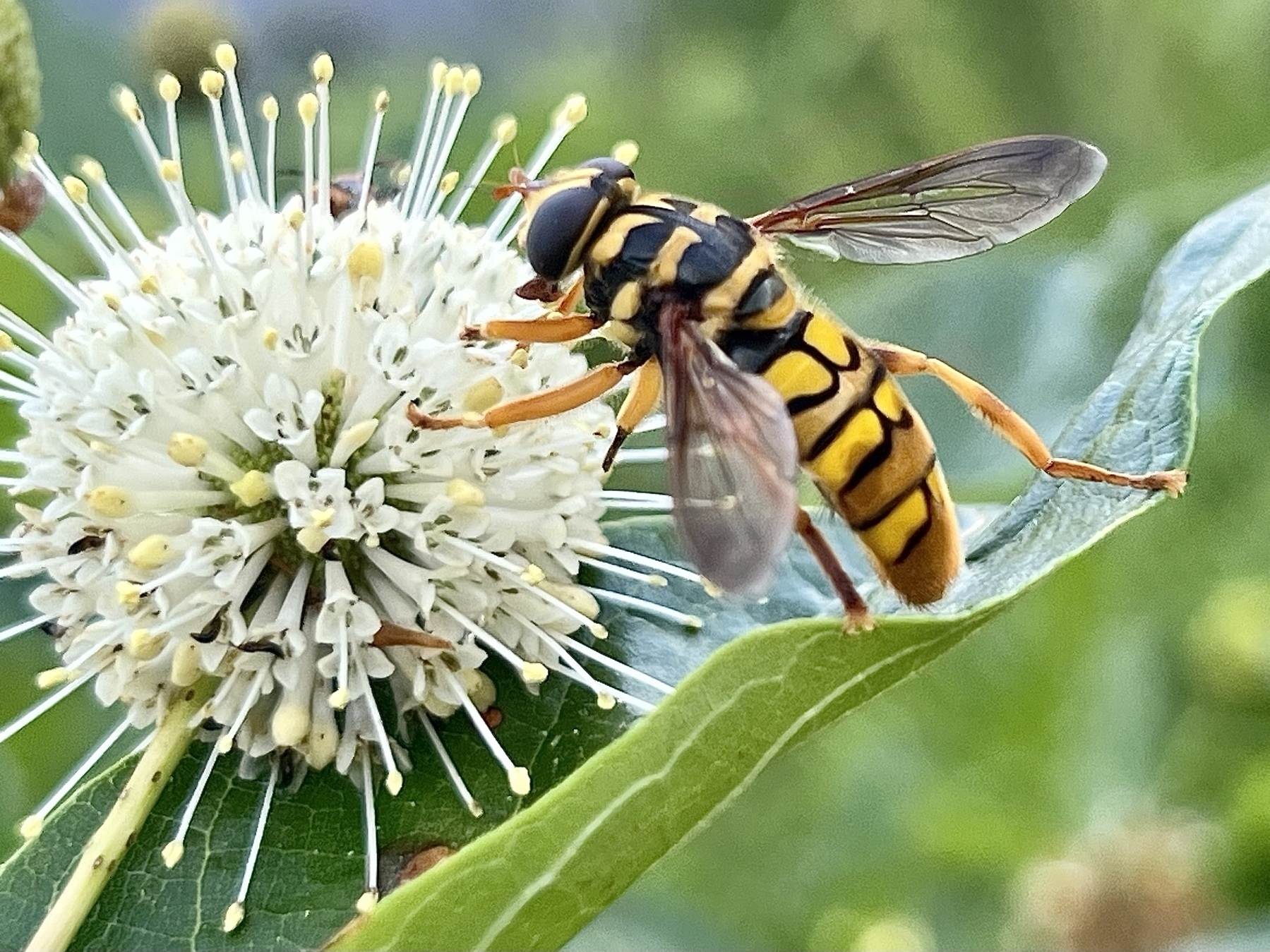
Eastern tiger swallowtail

If the world is to keep climate change at manageable levels before the middle of the century, changes in lifestyles are not only inevitable, but would need to be radical, and start immediately. Considering current consumption levels, citizens in many developed countries would have to cut their lifestyle carbon footprints by about 80-90% or more…
I’m an advocate of making such cuts. Individuals, families, communities, we are millions and our collective actions add up. This is an emergency. This is urgent. We must act today and together.
Climate scientist Johan Rockström explains the urgency of operating within “planetary boundaries“ - the planetary life-support systems essential for maintaining human life on Earth. By following the recommendations of science, Rockström believes we can avert an ecological and climate collapse and create a healthier, more prosperous future. But we have to act decisively now - or we will completely fail.
A True Paradise: AN EXISTENTIAL THREAT - Johan Rockström - YouTube
We are heading towards 3 to 4°C of warming across this century, an absolute climate catastrophe… And all we are doing so far is giving rhetoric and optimism and greenwash. … It is a choice to fail, and it’s a choice to succeed. If we sit back and wait for the great and good to deliver this change, then we will fail. It comes down to all of us to play our role as best as we can… Hope arises from civility society.
Essential viewing.
A True Paradise: WHERE WE ARE HEADING - Kevin Anderson - YouTube
No dog walk today. The upside: The more degraded our lives get today the more seriously we’ll take the problem. We should stop pretending that the climate emergencey is a far off future problem. It’s here today.
First, the record Canadian wildfire season exposed residents of the biggest cities in the Northeast and mid-Atlantic to hazardous air quality. Now low-level smoke is taking aim at the Midwest and Ohio Valley.
Canada wildfires break records and darken skies in the Midwest
Half of the world’s 10,000-odd bird species are in decline. One in eight faces the threat of extinction. This problem has been worsening for decades, which means scientists have been able to estimate roughly how many fewer birds are around today than, say, half a century ago. The numbers are startling.
Around the world, rainforests are becoming savanna or farmland, savanna is drying out and turning into desert, and icy tundra is thawing. Indeed, scientific studies have now recorded “regime shifts” like these in more than 20 different types of ecosystem where tipping points have been passed. Around the world, more than 20% of ecosystems are in danger of shifting or collapsing into something different.
Ecological doom-loops: Why ecosystem collapses may occur much sooner than expected
On the injustice of flying:
Just one flight can emit as much CO2 equivalent emissions as many people do in a year. While one return flight from Paris to New York accounts for a climate impact equivalent to 3.2 tonnes of CO2, an average person in Uganda emits just 1.1 tonnes greenhouse gasses.
If the wealthiest 10% continue living as they have they should own up to the their crime against the future as well as their contribution to climate injustice today. Don’t just point fingers at the top 1%. Own your contribution to the problem.
A record-breaking heat wave is entering its third week in Texas, as temperatures reach triple digits in the broader US south and tens of thousands of people in affected states are without power and lack air conditioning. … Texas cities have reached an unprecedented heat index – which combines temperature and humidity. Corpus Christi has hit 125F (51C), while Rio Grande Village notched 118F (47C) and Del Rio marked 115F (46C).
But hey, let’s keep flying, driving, consuming and pretending there’s nothing we can do about it. We’re special and exempt from any responsibilty.
Orcas disrupt boat race near Spain in latest display of dangerous, puzzling behavior | AP News
The behavior defies easy explanation.
Yes, it’s the Orcas with their dangerous behavior that we should focus on.
In other news, these are some of the whales that may go EXTINCT due to the actions of human beings:
- North Atlantic Right Whale (fewer than 500 left)
- North Pacific Right Whale
- Atlantic Humpback Dolphin
- Sei Whale
- Blue Whale
- Western Gray Whale
- Vaquita (a species of porpoise)
- Baiji (Possibly extinct)
But, yes, let’s do go on about the Orcas.
Based on these findings, the authors warn that more than a fifth of ecosystems worldwide, including the Amazon rainforest, are at risk of a catastrophic breakdown within a human lifetime.
“It could happen very soon,” said Prof Simon Willcock of Rothamsted Research, who co-led the study. “We could realistically be the last generation to see the Amazon.”
Ecological tipping points could occur much sooner than expected, study finds | The Guardian
Fossil fuel developers typically pay far lower fees for using public lands than their wind and solar counterparts. For example, before production fees kicked in, as of 2021 oil and gas paid $1.50 to $2 per acre in rental fees each year — although the 2022 Inflation Reduction Act increased some of those rates. But for wind and solar, the BLM currently calculates rental fees according to market-rate land values, which can run up to tens of thousands of dollars per acre.
File this under better late than never?
The feds move to speed up development of wind and solar on public land | Grist
Well, this is COMPLETE BULLSHIT.
Catch-22: Scientific communication failures linked to faster-rising seas | The Hill
Scientists failed for decades to communicate the coming risks of rapid sea-level rise to policymakers and the public, a new study has found.
Feeling a lot of rage as a reaction to this. It’s the media who have utterly failed on this. Over and over. From what I’ve read scientists have bent over backwards trying to communicate. Corporate media turned away for decades and only recently have they begun to do their job.
How to check your iPad’s battery health | Tom’s Guide
Knowing how to check your iPad’s battery health might sound easy, but it’s actually strangely hard information to find, despite how important that data is. Batteries degrade over time, so it’s handy to know how your long-serving tablet’s faring, or how healthy an iPad is if you’re trying to buy or sell it second-hand.
Be sure to read to the end to get the Shortcut which makes it much easier. Apple really should add the Battery health status to the settings app.
That mass drownings have become so common – more than 25,000 people have died or gone missing in the Mediterranean since 2014 – is shameful in itself. What is worse is that these disasters have come to be seen as almost normal. Planes and boats are scrambled to save a handful of people who took a risk for an adventure, while children and adults in imminent danger wait until catastrophe strikes.
Via Patrick Rhone
A Shortcut fix for iPad AirPlay to HomePods when using an external monitor
If you're using an M1 or M2 iPad with an external monitor you'll have noticed that the only audio available is that monitor. If there are no speakers or if the built in monitor speakers are lousy you have a couple choices for audio. Of course, AirPods are an option. Bluetooth to an audio speaker. If the monitor has an audio out you could plug in speakers. But HomePods are another option.
It might seem at first that this won't work. When using Music or the TV app, if you select HomePods from the AirPlay widget you'll get an error: "AirPlay is unavailable while an external display is connected."
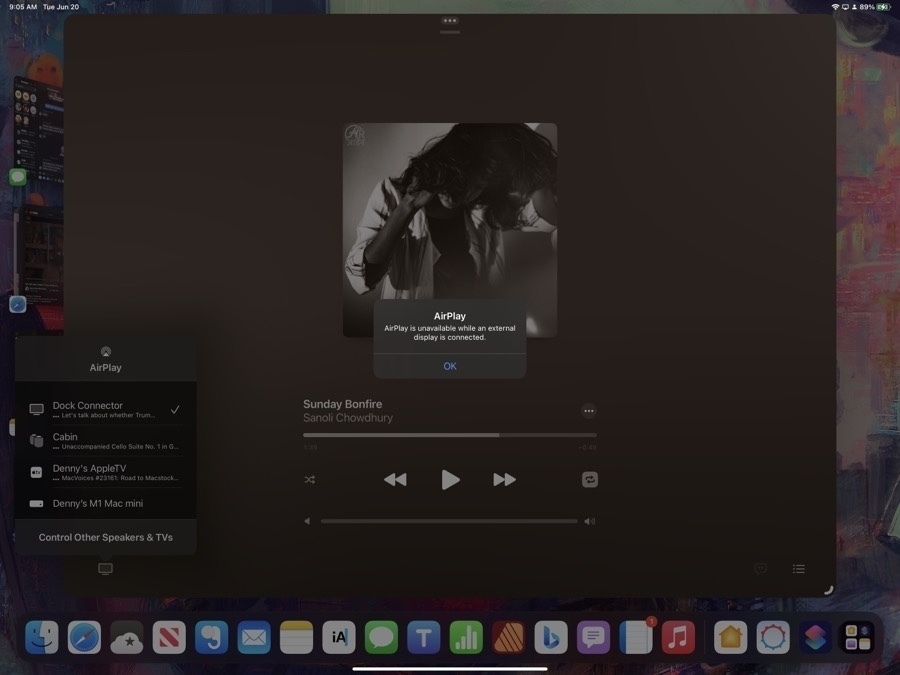
The solution is a simple shortcut. Run this and you can play audio to your HomePods when connected to an external monitor. If you pause playback for for more than a few minutes you'll have to re-run it because audio will default back to the connected monitor.

Other benefits of using this Shortcut: It seems to connect a bit faster than using the built in AirPlay widget found in apps. When I use that widget in the Music or Podcast app it actually transfers "ownership" of the audio stream to the HomePods. So, really, it's not AirPlaying the stream from the iPad/iPhone to the HomePods but rather the HomePods become the new source device:
When using the Shortcut the iPad or iPhone remains the source device and pushes the audio to the HomePods:
Another benefit when using the Shortcut is bedtime playing of a podcast. By using the shortcut method I can set the sleep timer in the Podcast app from the device. This isn't an option when using the AirPlay widget.
A few thoughts on WWDC23, the Vision Pro and iPadOS 17
It's been a couple weeks since Apple's WWDC keynote and I've been enjoying everyone's excitement. I'm not big on offering a quick hot take as I'd rather take my time in pondering the news.
Apple Vision Pro My initial reaction to the Vision Pro was pretty much in-line with what I'd expected based on the rumors. I think Apple's spatial computer will be a success. Will it redefine computing? That might be an overstatement but it seems likely that if all goes to plan it will certainly have a dramatic influence. Initially it will be an added option, an expensive and premium experience for those that can afford it. But given the cost of a MacBook Pro and external display can get into the territory of $3,000+ the Vision Pro, as a computer with nearly unlimited, room-filling screen size seems to be well within the range of Apple's current offerings.
In the run-up to the announcement, much has been speculated about the use-case for this device. Thus far headsets have been focused on virtual reality experiences such as gaming, and, I think, some are using it for certain industrial/training type applications. At least, that's my impression from a distance. I've not paid much attention to it. Meta wanted to expand that out into a virtual world of weird floating torsos for meetings and other, perhaps social events. Again, I've not paid much attention to it beyond initial skimming of the creepy avatars. Meta's attempt hasn't gone far and seems to be stalled. And so it's easy to think that this is a very small, niche market not likely to be a space where broad consumer success would happen, even for Apple.
I think it's clear to most by now that what Apple showed us two weeks ago is intended to be something much bigger. And really, it's not surprising given the time and resources they've put into the product. Of course they're going to offer something unlike what's come before, that's what they do. This is not a VR headset but rather a powerful computer that you wear in front of your eyes. It's more akin to an iPad Pro than Mac in that it will run iPad style apps from the start and it has a windowing system that seems more reminiscent of an iPad Pro with Stage Manager enabled. While the windows have a new visual style unique to the new OS they generally seem similar to the style of windows iPadOS in that they are rounded with more space between elements when compared to the more dense, less rounded windows of Mac app windows.
I also suspect that the Vision Pro will frustrate some Mac users in the same way the iPad has. After the initial flash of excitement Mac power users will run up against an OS and applications that, while visually very well designed are still, at the end of the day, more like an iPad than a Mac. And while iPadOS and apps have all been growing in complexity and capability they are still not quite a Mac. But, more importantly, like the iPad, the Vision platform is based on an interaction model that is not a keyboard and a mouse and some will struggle with that just as they have with the iPad and it's unique gesture based interactions.
That said, one key difference is in the size of the windows which will give Vision computers some breathing room. The iPad form factor has always been smaller, maxing out at 13". Even as the OS has become more refined and powerful, it's still a small screen and I think that's been a problem for Mac users that are used to screens 14" and larger. But Vision computers won't be limited in that way. Users will have more room to work and that will relieve some of the sense of confinement they feel when working with the smaller screened iPad. I suspect the experience of using a Vision computer, compared to a Mac, will be simultaneously amazing and frustrating for some.
Another key difference, Vision computers will also offer a gaming and entertainment experience that goes far beyond what a traditional computer or iPad can offer. That, combined with a huge, iPad sized App Library plus new apps designed for the platform, would seem to provide the kind of foundation that might lead to a slow and steady adoption.
We'll still be using smart phones, tablets, laptops and desktops for a good long while. But in 3-5 years we'll begin to see the roll-out of more models of Vision computers in higher volumes. With early bugs squashed, a larger App Library, an improved, higher volume production line, the prices will have started to come down and the general public will have gotten more used to the idea of such a device and what it offers. My guess is that the least expensive version of the 2028 model will be the hardware equivalent to this first offering but at a much lower price. Thinking about it in the context of a long game, in the 4 to 6 year time frame, it seems reasonable to suggest that Apple's headset line-up will have come down to entry level models in the range of $1,500 to $2,000. Still above a budget Mac or iPad, but more affordable.
We'll see. At the moment there seems to be a lot of potential and excitement for this new category of computer. There's plenty of time yet for more hot takes, flushed excitement to be followed by flushed frustration.
Next, iPadOS 17. Beyond the Apple Vision Pro, my primary interest is what's coming to iPadOS. Probably most notable:
- The customizable Lock Screen with widgets looks really nice and I imagine will be a helpful addition.
- Interactive widgets (and more placement options of those widgets on the Homescreen).
- PDFs in Notes get some really excellent updates like machine learning that recognizes/creates form fields. For people that use pdf forms or who rely on pdfs for annotating or collaboration, these updates will be really useful. I can imagine this will be really great for students.
- Notes gets cross-note linking which is going to be helpful for some.
- Reminders is getting a new column view and categories for grocery lists.
- Not too surprising, Stage Manager is getting more window resizing and placement options which will improve the experience.
I've been really satisfied with iPadOS 16 and the improvements coming with the above features and the many other enhancements in iPadOS 17 will only make it better. The improvements to Stage Manager will likely quiet some of the most vocal complaints of that feature heard over the last year. In other words, the iPad is still not a Mac but some will find it more usable as it more closely approximates the macOS experience they want.
There was no mention of Xcode for iPadOS so that will be a complaint for another year.
With the Stage Manager improvements and the release of FCP and Logic Pro for iPad just before WWDC, it seems likely that we'll see a 15" iPad Pro or iPad Studio sometime in the next year. And I would think that either this year or next year's iPhones will also have cameras/features added for both Vision's 3D video as well as for capturing video for FCP for the iPad. Is there enough bandwidth for that sort of real time capture?
Those of us already happy with the iPad will be even happier.
